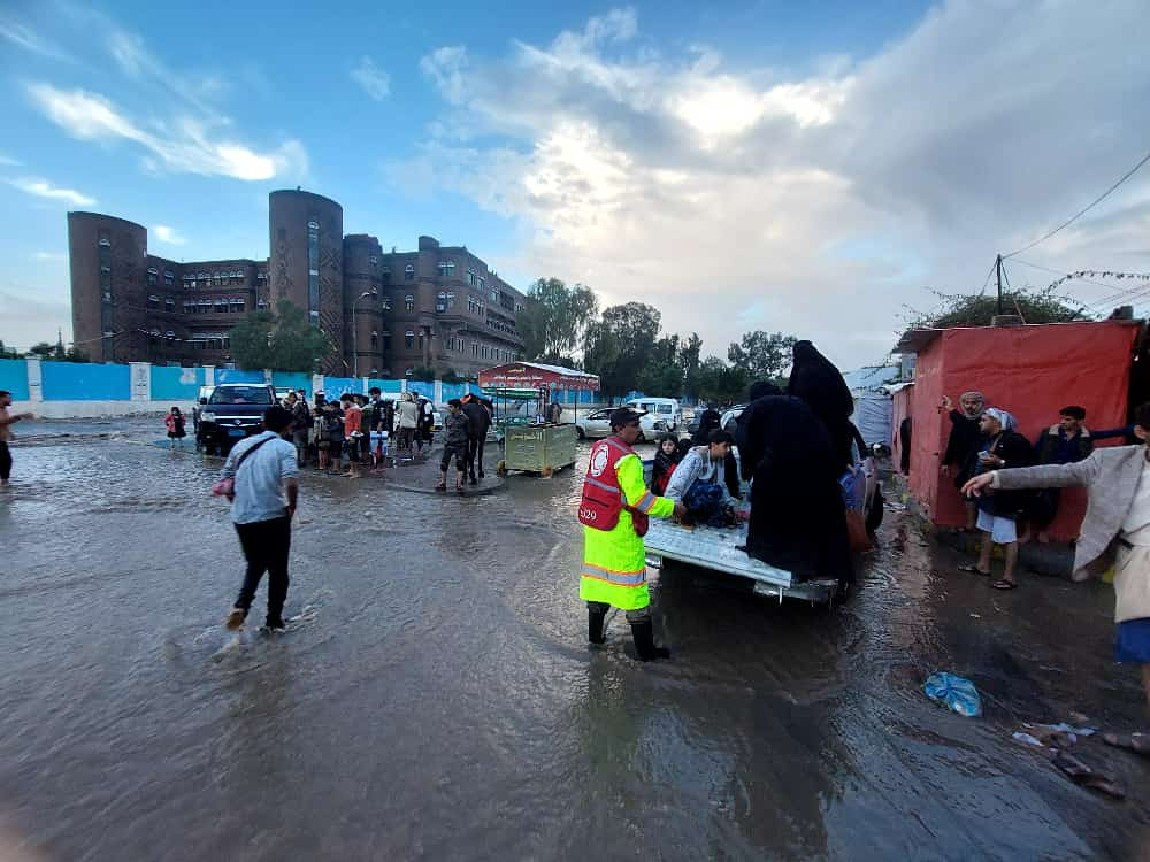
Extreme weather in Yemen offers glimpse of country’s climate future

By the Climate Centre
The Yemen Red Crescent Society (YRCS) said this week it is stepping up its flood response operation after last month’s storms and floods that the UN locally has described as unprecedented.
After all access roads were cut by floodwater, Red Crescent volunteers trekked for five hours to the eastern town of Hawra carrying heavy sacks of ICRC-donated food aid on the backs; it was later parcelled up and distributed to 20 families.
The ICRC in Yemen said last month it had provided emergency food and non-food items to 1,000 affected families (on average 7,000 people) for distribution by the Red Crescent.
In its latest post, the YRCS said yesterday ongoing heavy rainfall has caused loss of life and damage to shelters, crops and infrastructure across various governorates.
The YRCS was redoubling its efforts to assist affected families, providing more non-food items to 500 households in the Zabid district of Hodeida, and 35 more families in Al Mahweet governorate, supported by the IFRC.
‘Yemen faces another devastating chapter in its relentless crisis, exacerbated by the intersection of conflict and extreme weather’
As many as half a million people have been affected countrywide by exceptionally heavy rainfall linked to climate change that has “caused massive destruction across vital sectors,” including agriculture, water sources and other infrastructure, causing displacement and aggravating an already-difficult picture on health, the IFRC says.
Issuing an emergency appeal for 20 million Swiss francs at the end of last month, the IFRC said as many as 8 million people may have been affected by the recent extreme weather; the appeal aims to assist 600,000 and was primed by an earlier IFRC-DREF allocation of 1 million.
“Since the onset of the floods, the YRCS has been responding on the ground, gaining acceptance and access in areas with restricted or limited presence of other humanitarian actors,” the IFRC said.
Hodeida, Hajjah, Taiz, Al Jawf and Marib are said to be the worst affected governorates, where “floods have caused complete or partial destruction of shelters, significant damage to health facilities and infrastructure, including water sources and sanitation facilities [and] resulted in the movement of unexploded ordnance into residential areas”.
The International Organization for Migration has announced its own appeal for more than 13 million US dollars. Its Acting Chief of Mission, Matt Huber, said last week: “Yemen is facing yet another devastating chapter in its relentless crisis, exacerbated by the intersection of conflict and extreme weather events.”
The Climate Centre’s analysis of Yemen’s climate, published earlier this year, quotes several sources as saying the risk of heavy rainfall events and flooding is expected to increase with climate change.
“Our knowledge about climate change in Yemen is made difficult by the limited observational record,” Climate Centre science lead Liz Stephens said today.
“The region in general has seen overall reductions in total rainfall while experiencing an increase in the frequency and intensity of extreme rainfall episodes.
“It’s the shift towards extremes at both ends of the scale – more intense rain, more severe droughts – that makes climate adaptation a challenge there.”
As many as 8 million people have been affected by exceptionally heavy rainfall that has caused massive destruction across vital sectors in Yemen. (Photo: YRCS via social media)